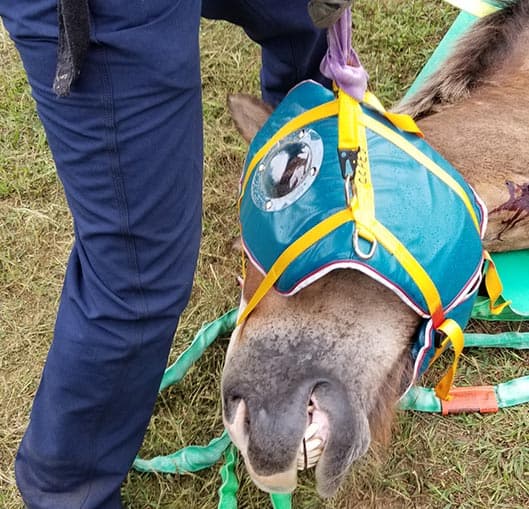
Horse Racing Medications and Therapeutic Drugs Update
Experts at the American Association of Equine Practitioners’ annual convention talk about medication regulation in the racing industry.

Experts at the American Association of Equine Practitioners’ annual convention talk about medication regulation in the racing industry.

Researchers found significantly lower levels of inflammation in synovial fluid and the joint lining in joints treated with bone-marrow-derived mononuclear cells.

Veterinarians sought to determine whether phosphorylated neurofilament heavy (pNfH), a protein unique to neurons, could be used to diagnose CVCM, eNAD/EDM, and shivers.

Researchers investigated how the novel surgical technique improved lameness and radiographic appearance in subchondral cystic lesions of the medial femoral condyle.

Researchers used CT scan and microscopic exam to characterize anatomical findings of the lumbosacral spine and document any damage or disease.

Consider doing tiebacks in horses where the problem is or will be performance-limiting.

Safety in Thoroughbred horse racing became a very public concern two years ago when a series of catastrophic breakdowns at Santa Anita Park in Southern California became national news. Veterinarians presented safety measures put in place to protect horses and humans.

Five clues she’s not ready to breed on the first heat after foaling, along with principles to follow if she is.

Vets and handlers can take these steps to keep horses restrained during recovery or rescue.

Researchers confirmed using resistance band systems, balance pads, and dynamic mobilization can help improve spinal muscle characteristics and postural stability.

Neurologic examinations in foals are easy to perform and provide useful information about the neonate’s overall health status.

Veterinarians can use these fetal parameters to monitor foal health and predict foaling date.

Researchers tested pooled platelet-rich plasma lysate as a unique anti-inflammatory approach to joint preservation on lab samples.

Renowned equine anesthesiologist Dr. John Hubbell described equine anesthesia, and its strengths and limitations, in the Milne Lecture.

Researchers explored the ability of bone marrow mononuclear cell (BMNC) therapy to improve lameness, with good results.

Researchers found horses treated with antibiotics have significantly less diversity (fewer bacterial species) in their GI microbiomes than healthy horses.
Stay on top of the most recent Horse Health news with
"*" indicates required fields